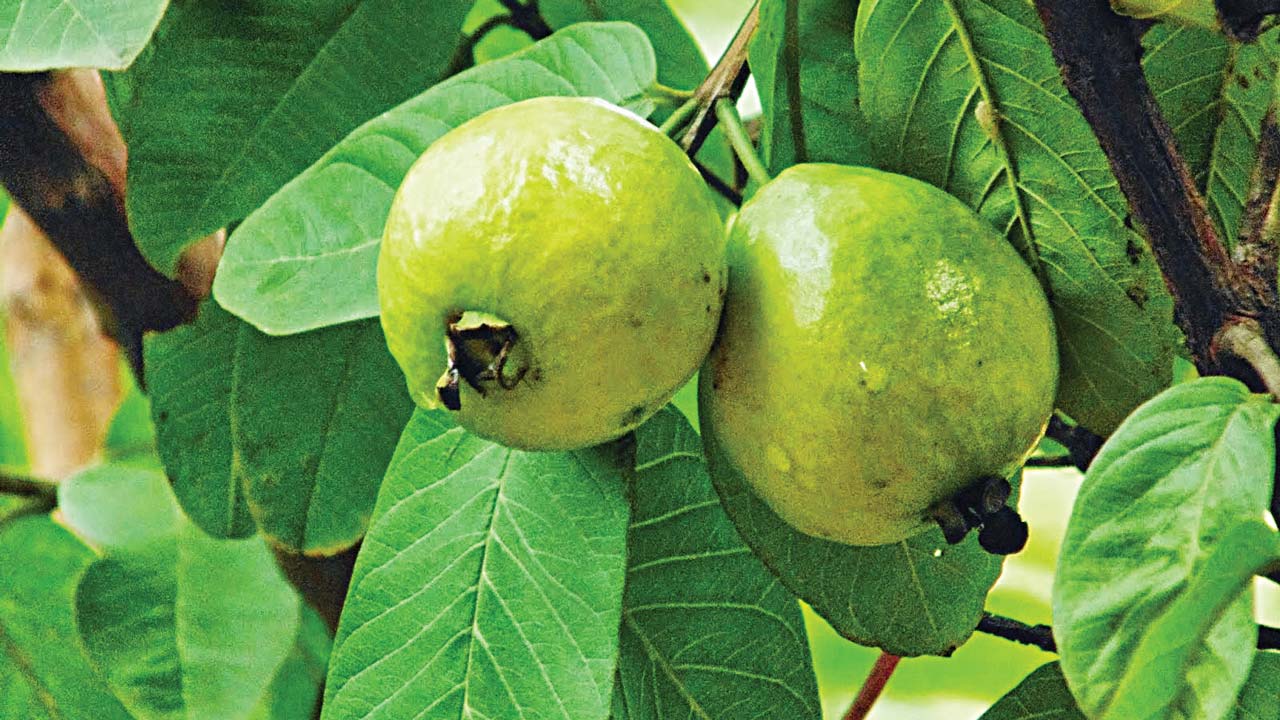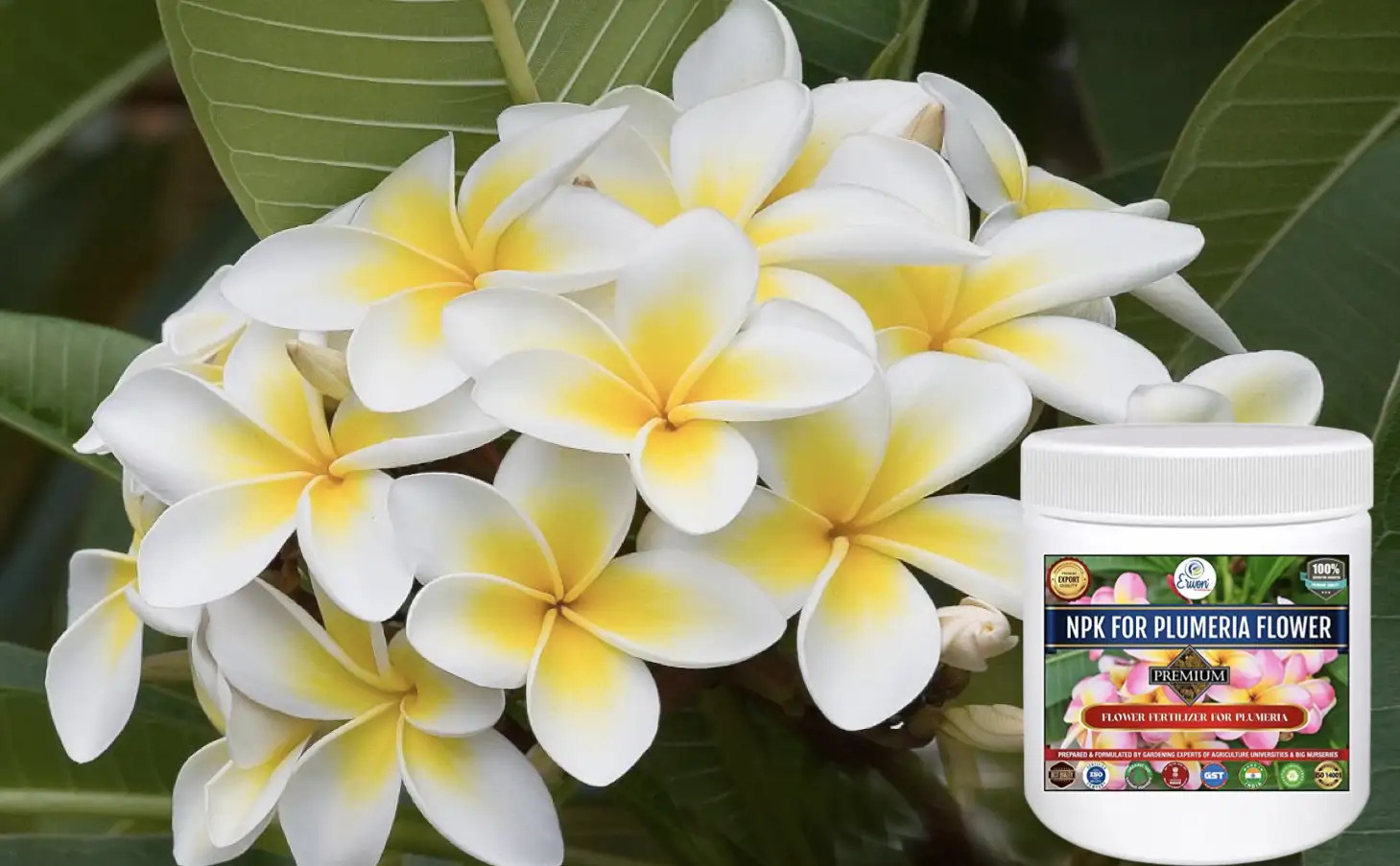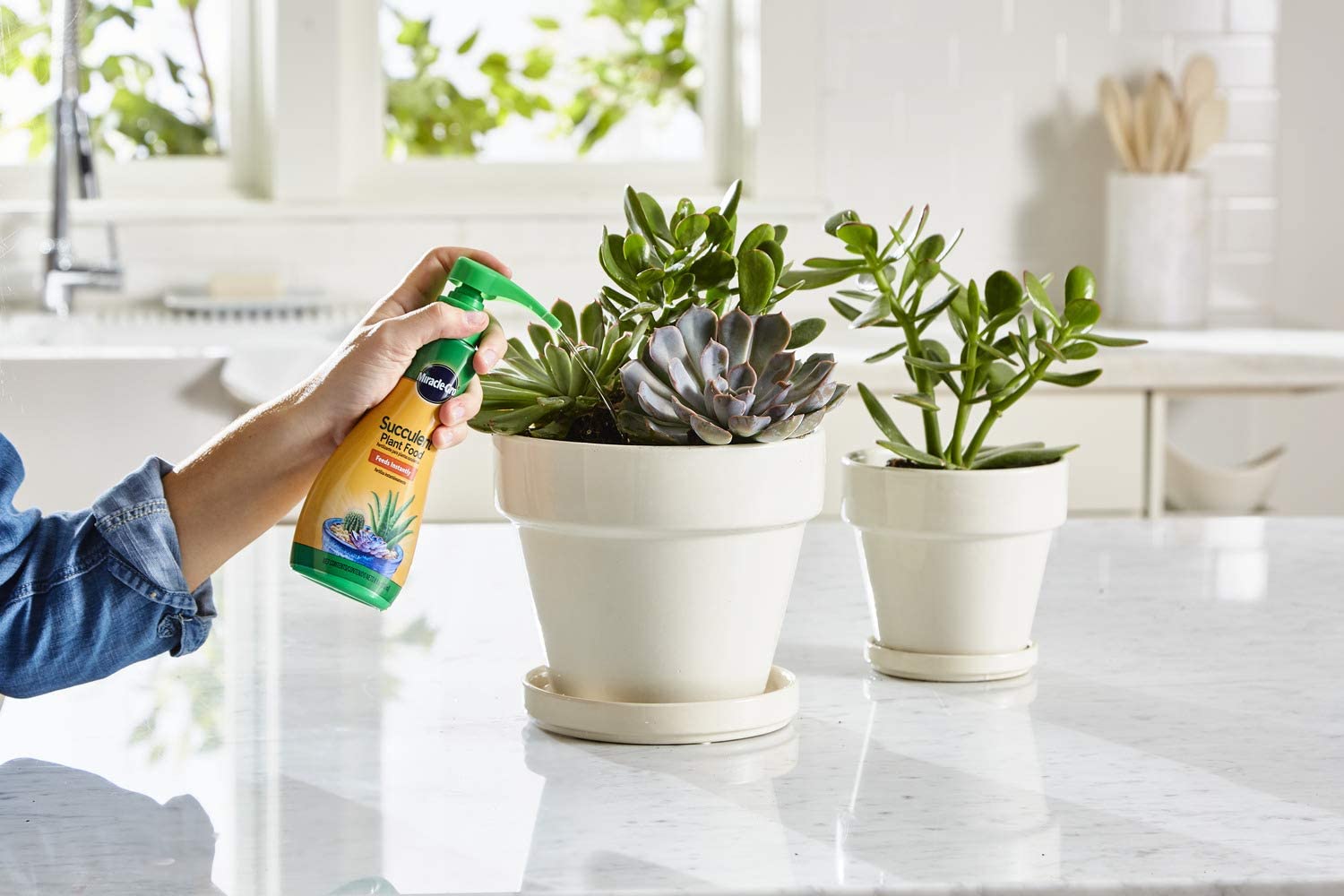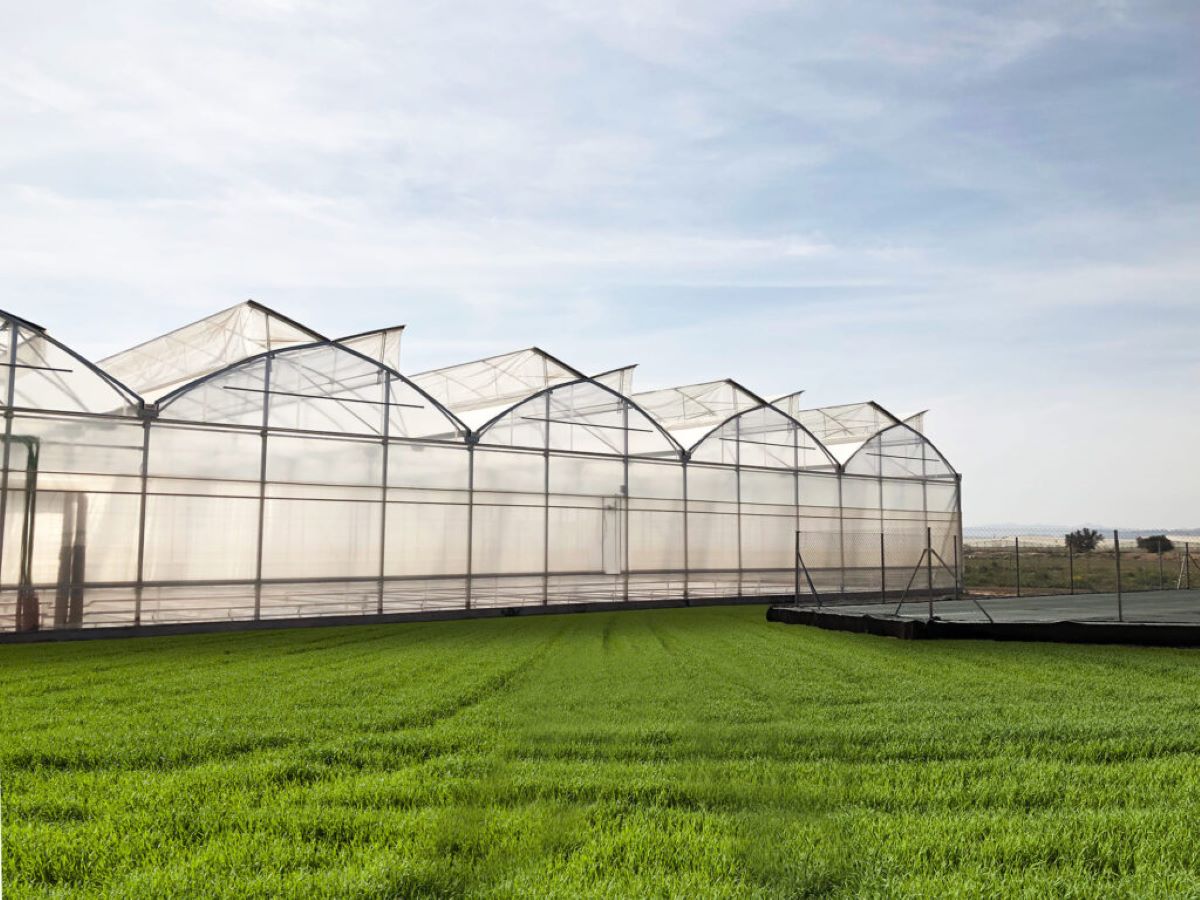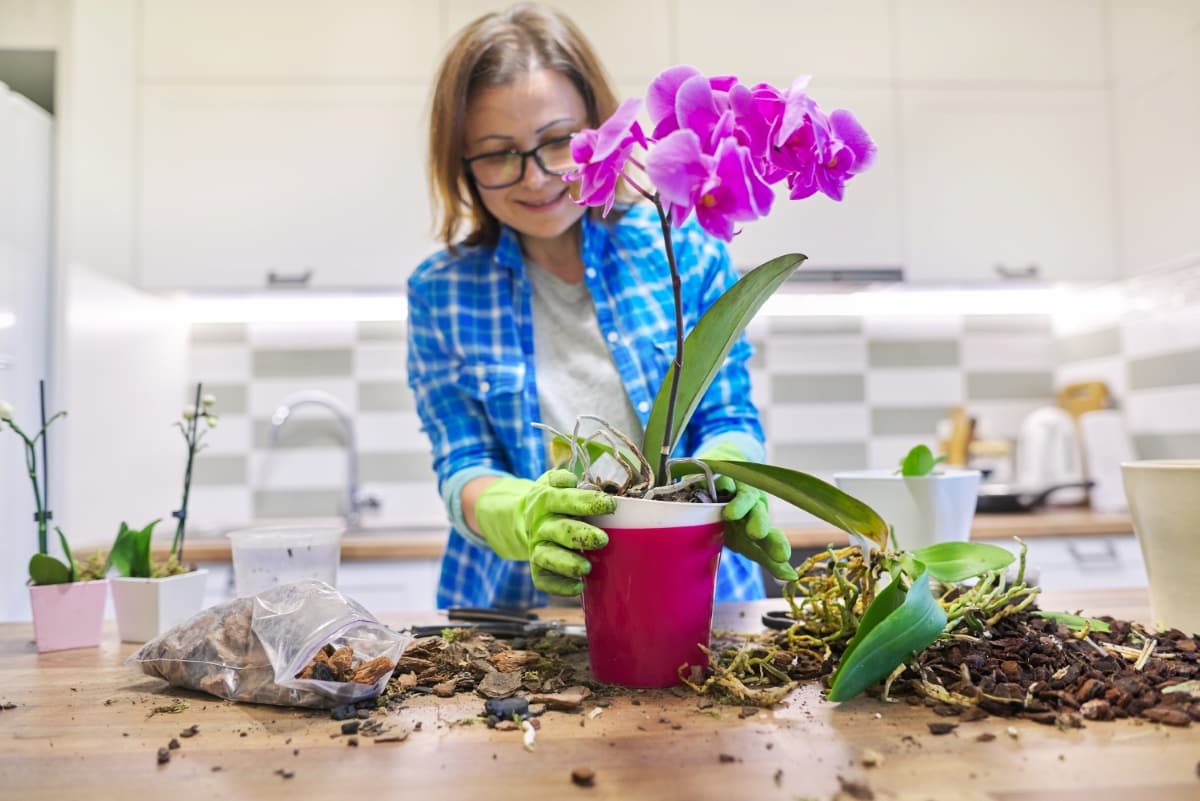Home>Types of Gardening>Ornamental Gardening>What Kind Of Bulbs Are Usually Used For The Vegetative Growth Phase?


Ornamental Gardening
What Kind Of Bulbs Are Usually Used For The Vegetative Growth Phase?
Published: January 23, 2024
Find out which bulbs are commonly used for the vegetative growth phase in ornamental gardening. Enhance your gardening skills with these helpful tips and recommendations.
(Many of the links in this article redirect to a specific reviewed product. Your purchase of these products through affiliate links helps to generate commission for Chicagolandgardening.com, at no extra cost. Learn more)
Table of Contents
Introduction
Welcome to the world of ornamental gardening! If you have a passion for adding beauty and charm to your outdoor space, ornamental gardening is the perfect outlet for your creativity. Whether you have a sprawling garden or a cozy balcony, ornamental plants and flowers can transform any space into a vibrant and enchanting oasis.
In this article, we will explore the various types of bulbs that are commonly used during the vegetative growth phase of plants. Understanding the different types of bulbs and their benefits will help you make informed decisions when it comes to selecting the right lighting for your ornamental plants.
During the vegetative growth phase, plants require specific light wavelengths to promote healthy leafy growth. Choosing the correct type of bulb is crucial to ensure your plants receive the optimal amount and intensity of light for their growth and development.
There are several types of bulbs available in the market, each with its own unique set of characteristics. In this article, we will delve into the details of incandescent bulbs, fluorescent bulbs, compact fluorescent lamps (CFL), high-intensity discharge (HID) bulbs, metal halide (MH) bulbs, high-pressure sodium (HPS) bulbs, and LED grow lights.
By understanding the pros and cons of each type of bulb, you can make an informed decision based on your specific gardening needs and budget. So, let’s dive into the world of bulbs and shed some light on the subject!
Incandescent Bulbs
Incandescent bulbs were once a popular choice for indoor gardening due to their affordability and availability. However, they are not the most efficient option for the vegetative growth phase of plants. These bulbs produce light by heating a filament inside a glass bulb, which then emits a warm glow.
One of the main drawbacks of incandescent bulbs is their low light output and high energy consumption. They emit a significant amount of heat, which can be detrimental to delicate plants if they are placed too close. Additionally, incandescent bulbs have a narrow light spectrum, which may not provide the necessary wavelengths for optimal plant growth.
While incandescent bulbs can produce a warm and cozy ambiance in your living space, they are not recommended as the primary light source for your ornamental plants during the vegetative growth phase. However, they can still be used as supplemental lighting or for decorative purposes.
If you do decide to use incandescent bulbs for your ornamental plants, it is important to keep them at a safe distance to avoid overheating and burning the leaves. Regular monitoring is required to ensure that the plants are not being subjected to excessive heat or light stress.
Overall, while incandescent bulbs may have their aesthetic appeal, they are not the most effective option for promoting healthy vegetative growth in ornamental plants. It is recommended to explore other types of bulbs that offer a wider light spectrum and greater energy efficiency.
Fluorescent Bulbs
Fluorescent bulbs have long been a popular choice for indoor gardeners due to their energy efficiency and affordability. These bulbs work by passing an electric current through mercury vapor, which in turn produces ultraviolet (UV) light. The UV light then interacts with the phosphor coating inside the bulb, resulting in the emission of visible light.
One of the main advantages of fluorescent bulbs is their ability to provide a wide spectrum of light that is suitable for plant growth. They emit light in both the blue and red spectrums, which are essential for promoting vegetative growth and overall plant health. This makes fluorescent bulbs a great choice for cultivating ornamental plants during the vegetative growth phase.
Moreover, fluorescent bulbs generate less heat compared to incandescent bulbs, reducing the risk of overheating or burning your plants. This allows you to place the bulbs closer to your ornamental plants without causing any damage.
Fluorescent bulbs are available in different types, including T5, T8, and T12. The number indicates the diameter of the bulb, with T5 being the smallest and most energy-efficient option. T5 bulbs are ideal for smaller spaces or areas with low ceilings, while T8 and T12 bulbs are better suited for larger gardens or grow rooms.
Another advantage of fluorescent bulbs is their long lifespan, typically lasting around 10,000 to 20,000 hours. This makes them a cost-effective choice for ornamental gardening, as they require less frequent replacement compared to some other bulb types.
However, it’s worth noting that fluorescent bulbs are not the most powerful option available. They may not provide adequate light intensity for certain plants with high light requirements. In such cases, supplemental lighting or the use of higher intensity bulbs might be necessary.
Overall, fluorescent bulbs are a reliable and energy-efficient choice for the vegetative growth phase of ornamental plants. They offer a wide spectrum of light, generate less heat, and have a long lifespan. If you’re looking for an affordable and practical lighting solution for your indoor garden, fluorescent bulbs are definitely worth considering.
Compact Fluorescent Lamps (CFL)
Compact Fluorescent Lamps (CFL) are a more advanced version of traditional fluorescent bulbs. They are designed to be more compact in size while delivering the same energy-efficient benefits. CFL bulbs work on the same principle as fluorescent bulbs, employing a combination of mercury vapor and phosphor coating to produce visible light.
One of the primary advantages of CFL bulbs is their energy efficiency. They consume significantly less energy than traditional incandescent bulbs while producing a comparable amount of light. This not only saves you money on electricity bills but also reduces your environmental impact.
Compact Fluorescent Lamps emit a wide spectrum of light, including the essential blue and red wavelengths needed for vegetative growth. This makes them an excellent choice for promoting healthy foliage and overall plant development during the vegetative growth phase.
CFL bulbs are available in various wattages and color temperatures, allowing you to customize the lighting conditions based on the specific needs of your ornamental plants. Higher wattage bulbs provide greater light intensity, which can be beneficial for plants with higher light requirements.
One of the key features of CFL bulbs is their long lifespan. They can last up to ten times longer than incandescent bulbs, typically ranging from 8,000 to 15,000 hours. This longevity reduces the hassle and expenses associated with frequent bulb replacements.
However, it’s important to note that CFL bulbs do generate some heat, although much less compared to incandescent bulbs. Therefore, it’s crucial to maintain an appropriate distance between the bulbs and your plants to prevent any heat-related damage.
When using CFL bulbs for ornamental gardening, it’s recommended to select bulbs specifically designed for plant growth, such as “daylight” or “grow” bulbs. These variations are optimized to emit the ideal light spectrum and intensity for promoting healthy vegetative growth in plants.
In summary, Compact Fluorescent Lamps (CFL) are an energy-efficient and cost-effective lighting option for the vegetative growth phase of ornamental plants. They provide a wide spectrum of light, have a long lifespan, and are available in various wattages and color temperatures. Whether you have a small indoor garden or a larger outdoor space, CFL bulbs can be a reliable choice to support the healthy growth of your ornamental plants.
High-Intensity Discharge (HID) Bulbs
High-Intensity Discharge (HID) bulbs are another popular choice for indoor gardening due to their high light output and suitability for promoting plant growth. HID bulbs operate by passing an electrical arc through a gas-filled chamber, resulting in the emission of intense light.
One of the main advantages of HID bulbs is their incredible light intensity. They can provide a substantial amount of light, making them an ideal choice for plants with high light requirements during the vegetative growth phase. HID bulbs are available in two main types: Metal Halide (MH) and High-Pressure Sodium (HPS).
Metal Halide (MH) bulbs emit a bluish-white light spectrum that closely resembles natural daylight. This makes MH bulbs an excellent choice for promoting vegetative growth and encouraging compact, leafy foliage in ornamental plants. MH bulbs are particularly beneficial for developing strong stems and lush greenery.
On the other hand, High-Pressure Sodium (HPS) bulbs emit a reddish-orange light spectrum that is rich in the red wavelengths. This spectrum is ideal for encouraging flowering and fruiting in plants, making HPS bulbs a great option for the later stages of plant growth.
One drawback of HID bulbs is their higher energy consumption compared to some other bulb types. They require a ballast to regulate the electrical current, and this additional component adds to the overall power consumption. However, the high light output and growth benefits offered by HID bulbs often outweigh this energy usage concern.
When using HID bulbs, it’s crucial to provide adequate cooling and ventilation to manage the heat generated. They produce a significant amount of heat, especially HPS bulbs, which can affect the temperature in your grow space. Heat management techniques, such as exhaust fans and air circulation, should be implemented to maintain an optimal growing environment for your plants.
It’s also important to consider the size of your gardening space when using HID bulbs. These bulbs are generally better suited for larger grow areas due to their high light intensity. If you have a smaller indoor garden or limited space, you may need to adjust the height and distance of the bulbs to prevent excessive heat and light stress on your plants.
In summary, High-Intensity Discharge (HID) bulbs, including Metal Halide (MH) and High-Pressure Sodium (HPS) variants, are a powerful lighting option for promoting healthy vegetative growth and flowering in ornamental plants. They provide intense light output and specific light spectrums tailored to different growth stages. However, their higher energy consumption and heat generation should be managed properly to ensure optimal growth conditions for your plants.
Metal Halide (MH) Bulbs
Metal Halide (MH) bulbs are a type of High-Intensity Discharge (HID) bulb known for their ability to provide full-spectrum light that closely mimics natural sunlight. These bulbs are widely used in indoor gardening to promote vigorous vegetative growth and the development of lush, leafy foliage in ornamental plants.
One of the main advantages of Metal Halide bulbs is their balanced light spectrum that includes both blue and red wavelengths. The blue light spectrum is especially beneficial during the vegetative growth phase as it stimulates robust leaf development, promotes compact plant structure, and enhances overall plant health.
MH bulbs are particularly effective at preventing excessive stretching or elongation of plants, also known as etiolation. The intense blue light emitted by Metal Halide bulbs encourages strong stems and compact growth, resulting in sturdy and healthy ornamental plants.
These bulbs are also known for their high light output, making them suitable for larger gardening areas. They provide optimal light intensity, ensuring that plants receive sufficient illumination for photosynthesis and healthy growth.
It’s worth noting that Metal Halide bulbs can generate a considerable amount of heat. This heat output should be carefully managed to prevent heat stress and damage to your plants. Adequate ventilation and air circulation systems with exhaust fans can help dissipate the heat and maintain an optimal growing environment.
When using Metal Halide bulbs, it’s important to position them at an appropriate distance from your plants. Typically, MH bulbs should be placed around 12 to 18 inches away from the canopy to ensure the right balance of light intensity and heat distribution.
Another factor to consider when using MH bulbs is their lifespan. These bulbs tend to have a shorter lifespan compared to other bulb types, typically ranging from 6,000 to 10,000 hours of use. Regularly monitoring and replacing the bulbs when necessary is crucial to maintain consistent and effective lighting for your ornamental plants.
In summary, Metal Halide (MH) bulbs are a powerful lighting option for promoting vigorous vegetative growth in ornamental plants. They offer a balanced full-spectrum light that supports optimal leaf development and sturdy plant structure. However, proper heat management and regular bulb replacement are essential to ensure the longevity and effectiveness of MH bulbs in your indoor garden.
High-Pressure Sodium (HPS) Bulbs
High-Pressure Sodium (HPS) bulbs are a type of High-Intensity Discharge (HID) bulb commonly used for promoting flowering and fruiting in ornamental plants. These bulbs emit a reddish-orange light spectrum that is rich in the red wavelengths, which are essential for stimulating the reproductive phase of plant growth.
One of the main advantages of HPS bulbs is their ability to deliver high light intensity. This makes them ideal for plants with high light requirements during the flowering stage. HPS bulbs provide a strong and powerful light source that ensures flower development, bud formation, and fruit ripening.
The red wavelengths emitted by HPS bulbs are particularly effective in triggering the transition from vegetative growth to the reproductive phase. They encourage the development and maturation of flowers, resulting in vibrant, colorful blooms and abundant fruit production in ornamental plants.
Moreover, HPS bulbs promote robust flowering by providing the necessary light intensity to penetrate deep into the plant canopy. This ensures that all parts of the plant receive adequate light for proper bud formation and flower development.
High-Pressure Sodium bulbs are known for their high energy efficiency, making them an economical lighting choice for flowering ornamentals. They produce a significant amount of light while consuming relatively less energy compared to other bulbs, which can help lower electricity costs.
However, it’s important to note that HPS bulbs generate a considerable amount of heat. It’s essential to manage this heat output to prevent heat stress on your plants. Adequate ventilation, including exhaust fans and air circulation, can help dissipate the heat and maintain a suitable temperature for optimal growth.
When using HPS bulbs, it’s crucial to ensure that the bulbs are positioned at an appropriate distance from your plants. Typically, HPS bulbs should be placed around 18 to 24 inches away from the canopy to maintain the right balance of light intensity and heat distribution.
Lastly, it’s essential to be aware of the lifespan of HPS bulbs. They have a relatively longer lifespan compared to some other bulb types, typically ranging from 10,000 to 24,000 hours. However, regular monitoring and replacing of bulbs when necessary are still necessary to ensure consistent and effective lighting in your flowering ornamental garden.
In summary, High-Pressure Sodium (HPS) bulbs are a popular choice for promoting flowering and fruiting in ornamental plants. They emit a reddish-orange light spectrum that encourages robust flower development and abundant fruit production. While managing heat output is crucial, their high energy efficiency and long lifespan make them a cost-effective lighting option for your indoor garden.
LED Grow Lights
LED (Light Emitting Diode) grow lights have revolutionized indoor gardening with their numerous benefits and advancements in technology. LED lights are known for their efficiency, versatility, and ability to provide targeted light spectra for different stages of plant growth.
One of the key advantages of using LED grow lights is their energy efficiency. They consume significantly less energy compared to traditional bulbs, making them an environmentally-friendly and cost-effective option. LED lights convert a higher percentage of electricity into usable light, resulting in less wasted energy and reduced electricity bills.
LED grow lights also offer precise control over the light spectrum emitted, allowing growers to tailor the lighting conditions to specific plant needs. LEDs are available in a variety of color options, including red, blue, and full-spectrum. This makes it possible to provide the optimal light wavelengths for different growth stages, from promoting vegetative growth to enhancing flowering and fruiting.
Another advantage of LED grow lights is their long lifespan. LED bulbs can last up to 50,000 hours or more, significantly outlasting many other bulb types. This longevity eliminates the need for frequent bulb replacements and reduces maintenance costs in the long run.
LED lights produce minimal heat, which is beneficial for indoor gardening. The low heat output allows growers to place the lights in close proximity to the plants without the risk of burning or overheating them. This proximity maximizes the light intensity and ensures that plants receive consistent and adequate illumination.
LED grow lights also come in various shapes and sizes, providing flexibility in design and installation. They are available as panels, bars, or even adjustable fixtures that can be customized to fit different grow spaces and plant arrangements. This versatility allows growers to create efficient lighting setups suitable for their specific ornamental gardening needs.
Despite their numerous benefits, it’s important to note that LED grow lights can be initially more expensive compared to other lighting options. However, the long-term energy savings, extended lifespan, and superior performance make them a worthwhile investment for serious ornamental gardeners.
In summary, LED grow lights offer many advantages for ornamental gardening. They are energy-efficient, provide precise control over the light spectrum, have a long lifespan, produce minimal heat, and offer versatility in design. While they may have a higher upfront cost, LED grow lights are a valuable and sustainable lighting solution for achieving optimal growth and vibrant blooms in your ornamental plants.
Conclusion
Choosing the right bulbs for the vegetative growth phase of your ornamental plants is crucial for their healthy development and overall success. Throughout this article, we have explored several types of bulbs commonly used in ornamental gardening, including incandescent bulbs, fluorescent bulbs, compact fluorescent lamps (CFL), high-intensity discharge (HID) bulbs, metal halide (MH) bulbs, high-pressure sodium (HPS) bulbs, and LED grow lights.
While each type of bulb has its own advantages and considerations, it’s important to select one that provides the optimal light spectrum, intensity, energy efficiency, and heat management for your specific indoor or outdoor growing space. Understanding the unique benefits and limitations of each bulb type can help you make informed choices to support the vegetative growth phase of your ornamental plants.
Incandescent bulbs, although affordable and readily available, are not recommended as the primary light source for vegetative growth due to their low light output and high energy consumption. They can, however, be used as supplemental lighting or for decorative purposes.
Fluorescent bulbs, especially compact fluorescent lamps (CFL), are energy-efficient options that provide a wide spectrum of light suitable for promoting vegetative growth in ornamental plants. They generate less heat and have a long lifespan, making them a popular choice for indoor gardening.
High-intensity discharge (HID) bulbs, such as metal halide (MH) and high-pressure sodium (HPS) bulbs, offer high light intensity and specific light spectra tailored to different growth stages. MH bulbs are effective for promoting vegetative growth and compact foliage, while HPS bulbs are excellent for encouraging flowering and fruiting in plants.
LED grow lights have revolutionized indoor gardening with their energy efficiency, customizable light spectra, long lifespan, and minimal heat output. Despite their initial cost, LEDs are a cost-effective and sustainable lighting solution for achieving optimal growth in ornamental plants.
In conclusion, selecting the appropriate bulbs for the vegetative growth phase of your ornamental plants requires careful consideration of light spectrum, intensity, energy efficiency, heat management, and long-term costs. By understanding the characteristics and benefits of various bulb types, you can create the ideal environment to nurture your ornamental garden and cultivate vibrant, healthy plants that bring beauty and joy to your space.
